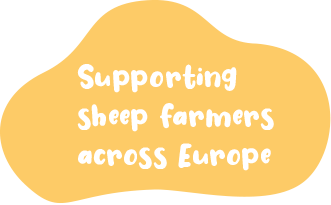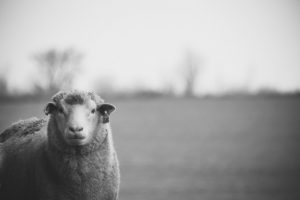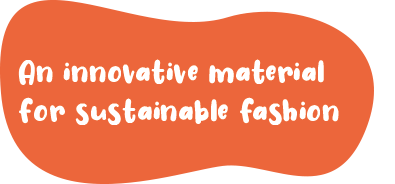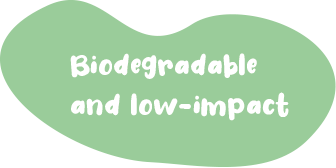

Cloudwool’s story began as Doppelhaus’ founders Martin and Yolanda learned of the plight of British sheep farmers, who are now struggling to make ends meet after years of record low prices for British wool.
Why Do sheep farmers need our support?
Sheep farming is perhaps the most sustainable method of raising livestock. Sheep in the UK and mainland Europe are typically farmed extensively, enjoying a ‘super free range’ lifestyle where they can roam freely in the hills of the British landscape, herded in occasionally by attentive farmers who take great care of their small flocks.
Despite centuries of tradition, this profession is truly endangered. The EU subsidy is structured in a way that it rewards intensive farming, rewarding the biggest agribusinesses who produce the most meat or use the most land. Sheep farmers across the whole continent lose out because their farming takes an ethical, small-scale approach – the way things used to be, before meat came vacuum-sealed in plastic packages.
British farmers are now being pushed even closer to the edge. They lost out hugely in this year’s pandemic crisis, as less wool was bought by the wholesalers, farmers were forced to leave their freshly shorn wool to rot in the fields. In view of climate change, we should, in fact, be doing everything to encourage ethical, regenerative farming and supporting local shepherds as shining examples of best practice.

How can this quality natural fibre be going to waste?
Over the past century, imported Merino wool has come to dominate the wool market for textiles. While the value of Merino wool grown in Australia has gone up, the value of wool grown in Europe has gone down. Almost all wool clothing produced worldwide is now made from wool shorn from sheep in Australia or China, spun, woven and imported in a production chain spanning up to 20,000km.
As European wool has fallen out of use in clothing, the price of Merino wool has rocketed so high that mass market fashion can barely afford to use wool fibre at all. Try to find a wool coat on the high street – it may have some wool content, but most probably in a blend with synthetic nylon or polyester. If we are to counter climate change, we need to reduce our reliance on virgin polyester, made from petrochemicals – yet if we can’t afford clothes made from pure natural fibres, what can we do?
Cloudwool - making pure wool accessible again

That’s why we created Cloudwool® – a pure wool material made from local fibres, that can bring European wool back into fashion. After learning the farmers’ story, we couldn’t sit by and do nothing. We put our textile design and technical knowledge to good use, and developed an innovative way to produce a wool material for fashion that would be scalable in Europe.
Cloudwool is a new, lighter kind of wool felt, perfect for sustainable fashion. Engineered in Germany with nonwoven technologies, it’s more affordable than other pure wool materials and made locally using wool from Europe.

Merging nature + technology
Cloudwool is a pure wool nonwoven fabric made directly from fibres, not yarns. The original nonwoven is wool felt, made since prehistoric times by applying heat and friction to wool fibres to mat them together. If you’ve ever wondered why your jumper has shrunk in the wash, it’s because wool naturally tends to felt – microscopic scales on the fibre interlock and hold the fibres in place. Cloudwool uses new technologies that were designed to ‘felt’ synthetic fibres on a huge industrial scale. Doppelhaus are the first to try natural sheep’s wool with these techniques, and even the engineers were surprised with the results!
Cloudwool - a new kind of felt
Doppelhaus make use of efficient nonwoven textile production techniques that have never before been used to make fabrics for a more circular fashion industry. Cloudwool’s innovative production method (patent-pending) goes straight from fibre to fabric, reducing a lot of the processes and energy required for spinning and weaving. This makes the production of Cloudwool really efficient and highly traceable, yet the material remains pure, natural and fully compostable at end of life.
The qualities of Cloudwool
With its airy structure, Cloudwool is very breathable and a fantastic insulator. Unlike synthetic materials, it can regulate your natural body temperature, keeping your body warm and letting it breathe. Pure Cloudwool is our original, pure wool, pure fibre material. Fantastic as a jacket outer or cosy blanket, it is available in a variety of weights. Cloudwool + combines fine layers of pure wool with a range of natural fibre interlayers. Hessian Cloudwool adds strength and weight for interiors applications, such as curtains or acoustic panels, highlighting Cloudwool’s beautiful fuzzy texture and translucent qualities. Cloudwool with Linen or Cotton offer an attractive double-faced material, suitable for tailoring, shoes or accessories. The Cloudwool is reinforced by the natural fibre woven material and the bonding is purely mechanical with no glues, meaning the material is easy to separate and fully biodegradable. With ‘Custom Cloudwool’ we are pioneering surface design methods specifically for nonwoven textiles. We can ‘paint with fibres’ and create a custom design to meet your needs. It’s also possible to use Cloudwool Inside as an alternative to light down in jackets and coats. Cloudwool can maintain a constant temperature for more than 24 hours, keeping you warm and toasty in any weather!

Cloudwool is a fully circular material designed to make fashion more sustainable.
Designed in line with Cradle to Cradle
Cloudwool was designed with the Cradle to Cradle philosophy in mind. Using pure wool fibres and only mechanical bonding methods, Cloudwool retains its full natural compostability right until the end of life. But of course, we would prefer Cloudwool to be recycled into new textiles! Wool is highly desired by textile recyclers, and as a nonwoven, the fibres from Cloudwool can be reclaimed at an even higher grade than from woven textiles, which require additional shredding.
How Cloudwool reduces the carbon footprint of fashion
Fashion is a big contributor to emissions of greenhouse gases worldwide.
Cloudwool requires just between 4-10% of the transport of the typical merino wool fabric. However by doing more in-depth research, we’ve realised that shipping makes up just a fraction (on average 2%) of the entire carbon footprint of a fashion garment over its lifecycle. The highest impact areas in chronological order are:
- Fibre Production (37% on average)
- Yarn Spinning (12%)
- Dyeing and Finishing (18%)
- Garment Aftercare (29%)
Here is how Cloudwool significantly reduces the impact of each of these key areas.
fibre production
Fibre production is the highest impact area of fashion, therefore it is so important that any sustainable approaches to fashion take a closer look at how they can prolong the use of virgin fibres. Cloudwool only uses wool fibre that is grown as a by-product of food production. The UK has approximately 30 million sheep, each of which produce around 1-2kg of clean wool per year. This hair will grow no matter what – and farmers have to shear their sheep to ensure their welfare.
While wool is often viewed to have a fairly high carbon footprint due to the methane the sheep produce, in the case of European wool, the sheep are raised for lamb meat, so only a small proportion of the methane can be attributed to the wool fibre. Doppelhaus aims to use wool from farmers who practice regenerative farming practices, where farmers plant more trees and rotate the areas where the animals graze, in order to offset the carbon footprint and protect the landscape.
Yarn spinning
As Cloudwool goes straight from fibre to fabric, with no spinning required, a huge quantity of energy is saved as a large number of production steps can be avoided.
Spinning makes up at least 12% of the overall carbon footprint of a garment. It would be an even higher proportion in a garment that requires less aftercare.
Yarn production typically also wastes 17% of fibres – the shortest fibres that cannot be spun and are therefore discarded. As fibre production is the highest impact area of production, closely followed by spinning, this is very significant as the fibres, even if short, took a lot of energy to produce.
Cloudwool is 99% material-efficient, using every length of wool fibre. In the future we can potentially offset the wastage from conventional wool textile production by incorporating short fibres and ‘noils’ left over from yarn production that cannot be spun and woven.
Dyeing and Finishing
Cloudwool can be dyed and finished in a conventional manner, however these are options that the customer can choose for themselves.
We will never dye or finish not on-demand, so no resources are wasted unnecessarily.
Our fibre-laying techniques mean we can minimise the amount of dyeing we need to do to create a coloured material, preventing resources from being wasted.
Garment Aftercare
Cloudwool and all wool garments need a fraction of the washing and aftercare of many other garments (in comparison with e.g. cotton underwear).
A coat or jacket made from Cloudwool could be washed just once a year, and will never require tumble-drying so it will require less than ca. 20% of the washing and drying energy consumed when caring for other garments.
